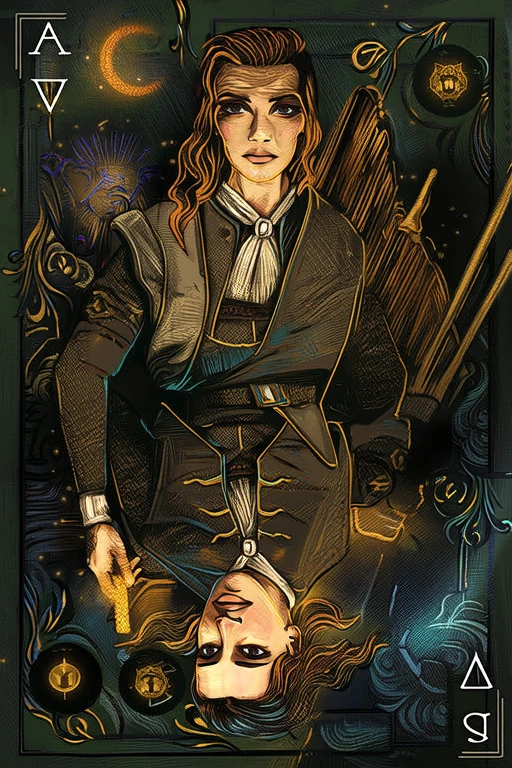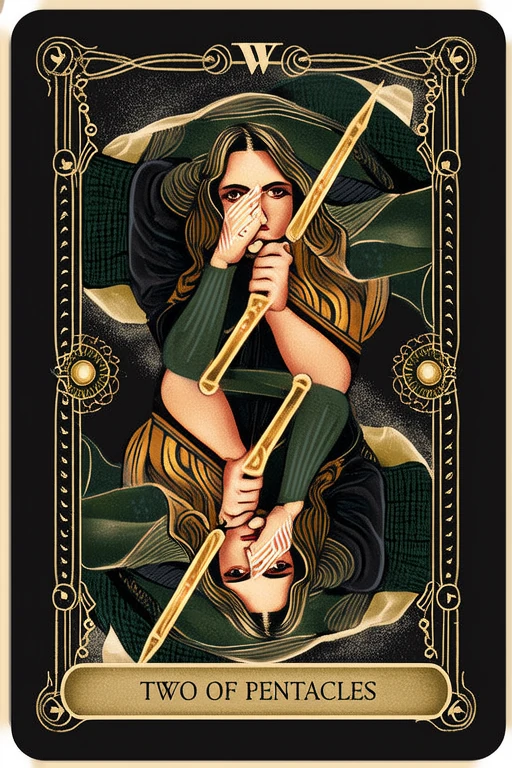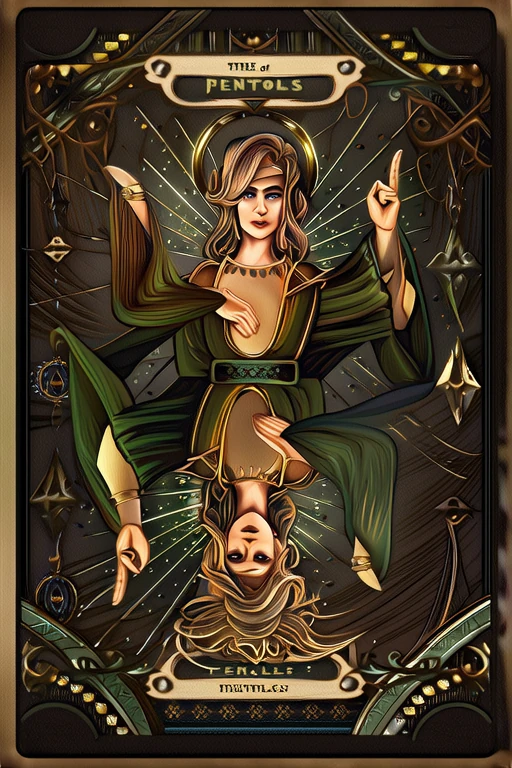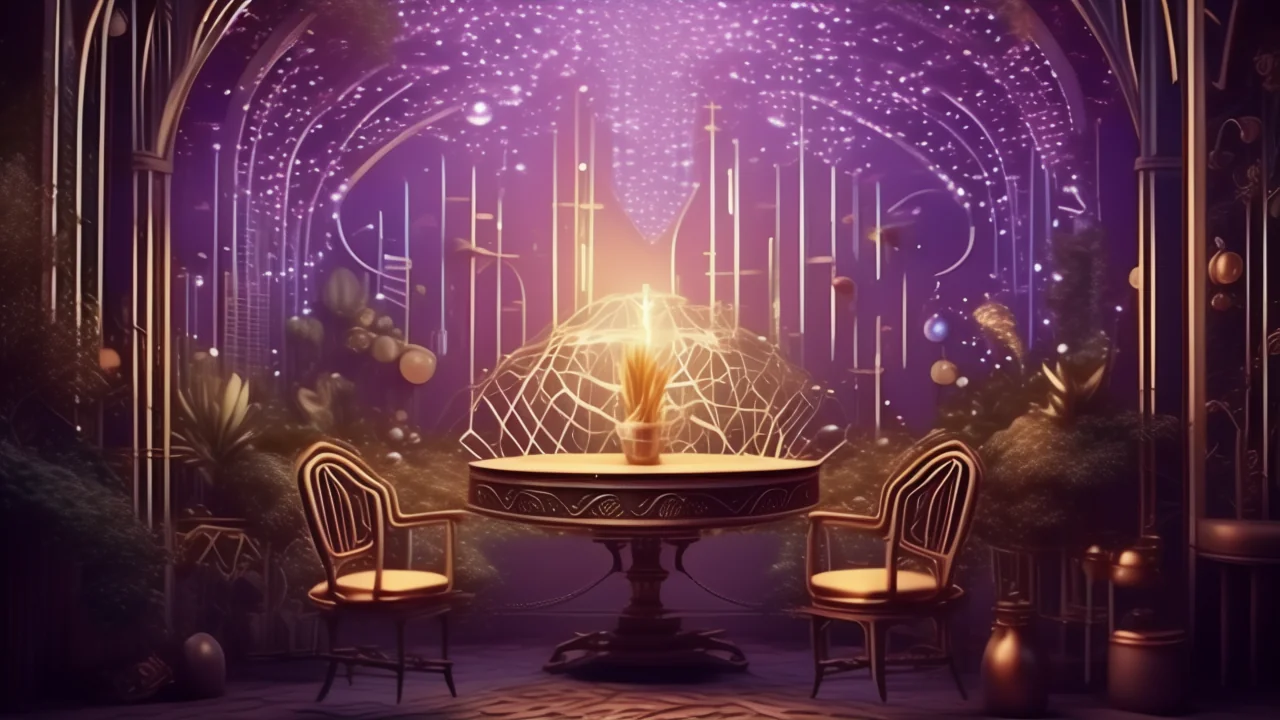
Five of Pentacles
Discover the deep meaning of Five of Pentacles with our free AI-powered tarot interpretation. Get instant, accurate readings based on advanced tarot knowledge.
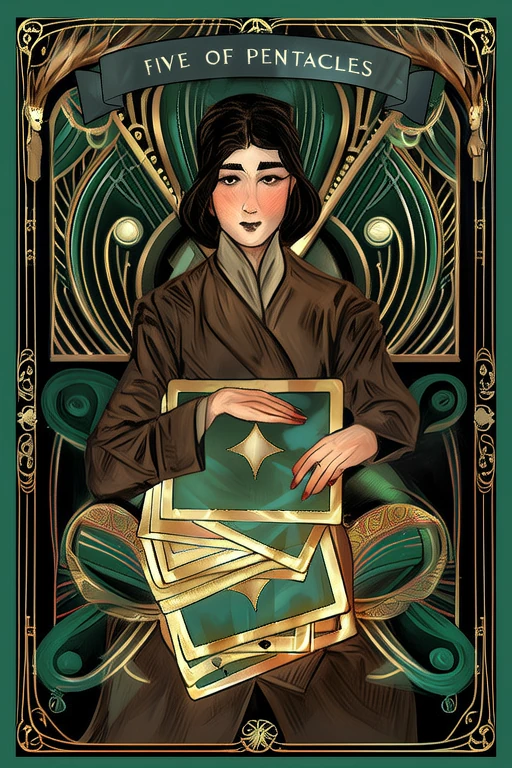
Keywords
Upright Meaning
Need, poverty, insecurity
Reversed Meaning
Recovery, charity, improvement
Full Interpretation
The Five of Pentacles represents need, poverty, and feeling left out in the cold.
In-Depth Analysis
📜 Historical Background
The Five of Pentacles is one of the 78 cards in the traditional Tarot deck, belonging to the Minor Arcana and specifically the suit of Pentacles (also known as Coins or Disks in some decks). Its origins trace back to early 15th-century Europe, particularly in Italy and France, where tarot cards were first used for playing games before evolving into tools for divination and spiritual insight. The earliest surviving tarot decks, such as the Visconti-Sforza and the Marseille Tarot, laid the foundation for the imagery and symbolism that would later influence modern interpretations of the Five of Pentacles.
In the Marseille tradition, the card typically features five figures—often depicted as beggars or individuals in a state of hardship—standing outside a stained-glass window of a church or cathedral. This imagery symbolizes exclusion, poverty, and spiritual neglect. The number five, associated with instability and imbalance, reinforces the idea of struggle and material loss. The pentacles themselves, representing the element of Earth and the material realm, emphasize the card’s connection to financial and physical well-being.
Over time, various esoteric traditions and occultists reshaped the card’s meaning. In the 19th century, the Hermetic Order of the Golden Dawn and later A.E. Waite and Pamela Colman Smith’s Rider-Waite-Smith Tarot (1909) further developed the card’s symbolism. Waite’s interpretation of the Five of Pentacles emphasized emotional distress, isolation, and the fear of material deprivation, while maintaining the visual motif of two figures trudging through snow, symbolizing hardship and neglect.
Cultural variations of the card exist across different tarot traditions. In some decks, the emphasis is more on spiritual disconnection than financial loss. For example, in the Thoth Tarot, designed by Aleister Crowley and Lady Frieda Harris, the card is called 'Discs' and titled 'Worry,' reflecting the emotional turbulence associated with this card. Other decks may depict the figures in different environments or with altered symbolism, reflecting the cultural or artistic lens of the deck’s creator.
Throughout its evolution, the Five of Pentacles has remained a potent symbol of material loss, emotional hardship, and spiritual neglect. Whether interpreted through historical, cultural, or personal lenses, the card continues to serve as a reminder of the fragility of material security and the importance of seeking support during times of need.
Symbolism & Imagery
The Five of Pentacles is rich in symbolic meaning, with each visual and numerical element contributing to its deeper interpretation. Traditionally, the card shows two figures—often a man and a woman—walking through a snowy landscape, appearing cold, weary, and in need. Behind them, a stained-glass window in a church glows with light, symbolizing spiritual solace or community support that seems just out of reach. The imagery conveys themes of exclusion, poverty, and emotional hardship.
Each of the five pentacles featured in the card plays a significant role. The number five in numerology is associated with change, instability, and challenges. In the context of the Pentacles suit—which governs the material world—this number suggests financial loss, health issues, or a sense of insecurity in the physical realm. The placement of the pentacles often varies by deck, but they typically surround the figures, emphasizing the presence of opportunity or support that remains inaccessible due to current circumstances.
Color symbolism is also essential. The cold, wintry landscape often depicted in the Rider-Waite-Smith style reflects emotional isolation and hardship. The warm glow of the stained-glass window contrasts with the bleak environment, representing spiritual or communal support that the figures have yet to reach. Red and gold tones in the window may symbolize divine guidance, hope, or the promise of aid, reinforcing the idea that even in times of material loss, spiritual resilience can provide a path forward.
Interpretations of the card vary across cultures. In some European traditions, the Five of Pentacles is closely tied to physical poverty and social exclusion. In contrast, modern Western interpretations often emphasize emotional and spiritual deprivation, such as feeling disconnected from one’s community or support system. In Eastern or holistic tarot practices, the card may be seen as a call to reconnect with the earth, seek grounding, or re-evaluate one’s material attachments.
When upright, the Five of Pentacles generally signifies financial hardship, illness, or emotional distress. It serves as a reminder that while current circumstances may feel bleak, they are often temporary and can be overcome with perseverance and support. Reversed, the card may indicate the beginning of recovery, a shift toward financial stability, or the realization that help is available. It can also warn against ignoring one’s needs or delaying necessary action.
The Five of Pentacles is connected to other cards in the Tarot deck through thematic and symbolic resonance. It shares similarities with the Three of Swords (sorrow and emotional pain) and the Ten of Swords (ultimate defeat), reinforcing themes of hardship and loss. However, it also connects with the Two of Pentacles and the Six of Pentacles, which offer pathways toward balance and generosity, suggesting that even in difficult times, there is potential for growth and renewal.
Psychological Insights
From a psychological perspective, the Five of Pentacles resonates with themes of insecurity, emotional distress, and the human experience of hardship. Carl Jung’s theory of archetypes provides a useful framework for understanding this card. The figures depicted in the Five of Pentacles can be seen as embodying the archetype of the 'Wounded One'—an individual facing adversity, often feeling isolated or abandoned. This archetype represents the shadow side of materialism and the consequences of over-attachment to physical security. The presence of the glowing window in the background may symbolize the 'Wise Old Man' or 'Spiritual Guide' archetype, offering the promise of support and inner strength.
In modern life, the Five of Pentacles often appears during periods of financial strain, health challenges, or emotional instability. It encourages individuals to acknowledge their struggles rather than deny or suppress them. The card serves as a reminder that hardship is a natural part of the human experience and that seeking help is not a sign of weakness but of wisdom. Whether facing job loss, relationship difficulties, or health concerns, the Five of Pentacles advises individuals to reach out to their support networks and take practical steps toward recovery.
On a personal growth level, this card prompts self-reflection and resilience. It challenges individuals to examine their relationship with material security and recognize that true stability comes from within. By confronting fears of poverty or failure, individuals can cultivate a deeper sense of self-worth and inner strength. The Five of Pentacles encourages embracing vulnerability as a pathway to growth, teaching that even in times of loss, there is potential for transformation.
In therapeutic and counseling settings, the Five of Pentacles can be a powerful tool for exploring issues related to self-esteem, financial stress, and emotional well-being. Therapists and counselors may use the card to help clients process feelings of inadequacy or isolation, guiding them toward self-compassion and practical solutions. The card’s message of seeking support aligns with cognitive-behavioral techniques that emphasize problem-solving and social connection.
Modern spiritual practices often incorporate the Five of Pentacles as a symbol of grounding and material healing. Meditation with this card can help individuals release fears of scarcity and open themselves to abundance. It is also used in rituals focused on financial healing, protection from loss, and reconnecting with the earth’s energy. Ultimately, the Five of Pentacles serves as a reminder that while material challenges may arise, they are temporary, and with resilience and support, one can emerge stronger.
Correspondences
The Five of Pentacles is associated with the astrological sign Taurus, ruled by Venus, which governs material wealth, stability, and sensuality. However, some esoteric traditions link it to Mercury’s influence due to its themes of communication and adaptability in hardship. Taurus energy brings a grounding force, emphasizing the importance of patience and resilience, while Venus reminds us of the value of love, beauty, and harmony even in times of loss.
In terms of gemstones and crystals, the Five of Pentacles resonates with grounding and protective stones such as Hematite, Black Tourmaline, and Smoky Quartz. These stones help absorb negative energy, promote emotional stability, and provide a sense of security during difficult times. Herbs and essential oils associated with this card include Patchouli, Myrrh, and Vetiver, which are known for their grounding, healing, and protective properties. These can be used in meditation, aromatherapy, or ritual work to support financial healing and emotional resilience.
The Five of Pentacles is connected to the season of Winter, symbolizing coldness, scarcity, and the need for inner warmth. It corresponds to the element of Earth, reinforcing its ties to the material world, physical health, and financial matters. In terms of time, this card is often associated with late autumn to early winter, a period of reflection and preparation for renewal.
Energetically, the Five of Pentacles aligns with the Root Chakra (Muladhara), which governs survival, security, and basic needs. When this chakra is imbalanced, individuals may experience fear, anxiety, or financial instability. Working with this card can help restore balance by encouraging grounding practices, financial planning, and emotional support.
Numerologically, the number five is linked to change, unpredictability, and transformation. In the context of the Five of Pentacles, it signifies a period of instability that ultimately leads to growth. This number challenges individuals to adapt, seek support, and trust in the process of life, reminding them that even in times of hardship, there is always a path forward.
❓ Frequently Asked Questions
The Five of Pentacles often raises questions among both novice and experienced readers due to its association with hardship and material loss. One of the most common questions is: 'Does the Five of Pentacles always mean financial trouble?' While the card frequently indicates financial instability, it can also represent emotional or spiritual deprivation. It is essential to consider the context of the reading and surrounding cards to determine whether the issue is material, emotional, or spiritual.
Another frequent inquiry is: 'What should I do if the Five of Pentacles appears in a reading?' The card serves as a reminder to seek support, reassess financial habits, and practice self-compassion. It suggests that while the current situation may feel bleak, it is temporary, and reaching out for help—whether emotionally, financially, or spiritually—is key to moving forward.
Beginners often misinterpret the Five of Pentacles as a purely negative card. However, it is not a harbinger of doom but rather a call to awareness. It encourages individuals to face their challenges head-on and recognize that hardship can lead to growth and resilience. Clarifying this misconception is vital for accurate readings.
For professional readers, the Five of Pentacles works well in spreads focused on financial concerns, emotional well-being, or spiritual guidance. In a three-card spread, it may appear as the challenge or past influence, with the following cards offering potential solutions or future outcomes. In a Celtic Cross spread, it often represents the immediate challenge or a hidden fear affecting the querent’s situation.
When interpreting the Five of Pentacles alongside other cards, its meaning can shift. For example, paired with the Six of Pentacles, it may indicate that financial assistance is on the way. With the Tower, it could suggest a sudden loss or upheaval. When combined with the Empress or the Sun, it may indicate eventual recovery and abundance after hardship.
Practical advice for interpreting the Five of Pentacles involves looking at its placement, surrounding cards, and the querent’s specific question. It is essential to approach the card with empathy and sensitivity, offering guidance rather than reinforcing fear. Encouraging the querent to seek support, budget wisely, or engage in self-care can provide actionable insights from this often-misunderstood card.
Practical Readings
Love Reading – Free • Online • AI • Instant • Accurate
In love, Five of Pentacles upright: Need, poverty, insecurity. Reversed: Recovery, charity, improvement.
Career Reading – Free • Online • AI • Instant • Accurate
For career, Five of Pentacles upright: Need, poverty, insecurity. Reversed: Recovery, charity, improvement.
Yes‑No Reading – Free • Online • AI • Instant • Accurate
As a quick yes‑no: upright tends toward “yes”, reversed leans “no”—interpret within your question’s context.
FAQ
What does Five of Pentacles mean in tarot?
Five of Pentacles represents need, poverty, insecurity. This card encourages The Five of Pentacles represents need, poverty, and feeling left out in the cold.
What is Five of Pentacles reversed meaning?
When Five of Pentacles appears reversed, it signifies recovery, charity, improvement. Consider areas that may require adjustment or release.
Is Five of Pentacles a positive card?
Five of Pentacles is generally considered a neutral to positive card, representing need, poverty, insecurity.
What should I do if I draw Five of Pentacles?
If you draw Five of Pentacles, focus on need, poverty, insecurity. Align actions with the card’s upright energy.
How do I interpret Five of Pentacles in a love reading?
In love readings, Five of Pentacles suggests need, poverty, insecurity in relationships. Consider how need and poverty apply to your situation.
What does Five of Pentacles mean in a love reading?
In love, Five of Pentacles points to need, poverty, insecurity when upright and recovery, charity, improvement reversed. Reflect on relational balance & authenticity.
How is Five of Pentacles interpreted in career?
For career, Five of Pentacles upright highlights need, poverty, insecurity while reversed warns of recovery, charity, improvement—adjust planning & execution.
What is the financial meaning of Five of Pentacles?
Financially, Five of Pentacles suggests need, poverty, insecurity potential; reversed indicates recovery, charity, improvement—use prudent pacing.
Is Five of Pentacles a yes or no card?
Five of Pentacles is generally a context-dependent when upright; reversed leans toward hesitation or NO—apply to the nuance of your question.
References
References
- Encyclopaedia Britannica – Tarot
Historical overview and cultural context of tarot cards.
- Wikipedia – Tarot
General reference on tarot history, structure, and usage.
- Biddy Tarot – Tarot Card Meanings
Widely cited interpretations and learning resources.
- Labyrinthos – Tarot Card Meanings
Educational articles on major and minor arcana.
